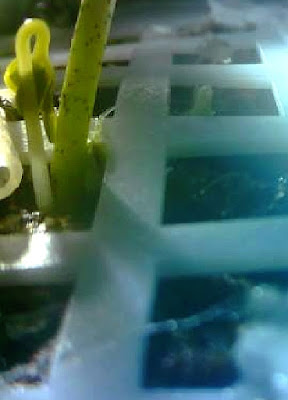 |
| A tiny region of space in the Fornax constellation via an imaging technique known as ABYSS. (Click to enlarge.) |
It's called the Hubble Ultra-Deep Field 2014 (HUDF), and it's one of the most breathtaking mosaics the telescope has produced. In it, around 10,000 galaxies gleam - a feast for astronomers exploring the early Universe.
Now a team of astronomers has made the image even better. Over the course of three years, scientists at the Instituto de Astrofísica de Canarias (IAC) developed and applied an image processing technique designed to draw out the unseen light in the HUDF.
They called this complex technique ABYSS, and with it they have recovered the dim light from the outer edges of the largest galaxies in the image."
- Image and quote from the January 25th, 2019 Science Alert article by Michelle Starr: Astronomers Have Made a Breathtaking Image Staring Deeper Into Space Than Ever Before. (Hat-tip to Graham Hancock.)
***
(Update, May 26, 2019)
Oddly enough, I never did make this a formal posting... as if I was unconsciously waiting for the precise moment to finish it. And, I guess that moment is now.
As it worked out, I was recently looking through an old stargazing book when I found that the constellation of Fornax was originally named (by the French astronomer Nicolas Louis de Lacaille) le Fourneau Chymique (the Chemical Furnace), and graphically described as an alembic - an alchemical still - in his early catalogue. Of course, had I had the time to really read the Wiki entry, I would have known this... in other words I didn't do my homework! Below is an illustration of the original constellation, a portion of a graphic found in the Wiki article.
 |
| le Fourneau Chymique (the Chemical Furnace) |
Cool! A tribute to alchemy... high up in the starry, starry sky.
The article also tells us that Chinese astronomers located Fornax in the area of the firmament they referred to as the White Tiger of the West. They referred to the constellation itself as the "heaven furnace" constellation.
And, this is all very interesting... especially as modern astronomers have located 6 star-systems which have planets in Fornax... and it makes this blogger wonder what Lacaille and his predecessors may have intuited was cooking up there in the Heavenly Alembic they both created and described.


